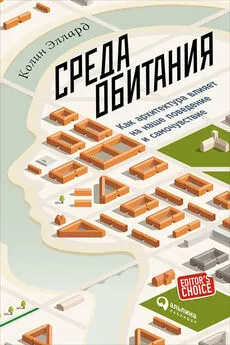Мэтью Джексон - Человеческие сети [Как социальное положение влияет на наши возможности, взгляды и поведение]
- Название:Человеческие сети [Как социальное положение влияет на наши возможности, взгляды и поведение]
- Автор:
- Жанр:
- Издательство:АСТ: CORPUS
- Год:2021
- Город:Москва
- ISBN:978-5-17-117364-7
- Рейтинг:
- Избранное:Добавить в избранное
-
Отзывы:
-
Ваша оценка:
Мэтью Джексон - Человеческие сети [Как социальное положение влияет на наши возможности, взгляды и поведение] краткое содержание
В формате PDF A4 сохранен издательский макет книги.
Человеческие сети [Как социальное положение влияет на наши возможности, взгляды и поведение] - читать онлайн бесплатно ознакомительный отрывок
Интервал:
Закладка:
Hodas N. O., Kooti F., Lerman K. Friendship Paradox Redux: YourFriendsAreMoreInterestingthanYou . 2013. ArXiv: 1304.3480v1.
Hofstra B., Corten R., Van Tubergen F., Ellisond N. B. Sources of Segregation in Social Networks: A Novel Approach Using Facebook // American Sociological Review. 2017. Vol. 82. № 3. P. 625–656.
Hogg M. A., Tindale S. Blackwell Handbook of Social Psychology: Group Processes . N. Y.: John Wiley & Sons, 2008.
Holland P. W., Laskey K. B., Leinhardt S. Stochastic Blockmodels: First Steps // Social Networks. 1983. Vol. 5. P. 109–137.
Hölldbler B., Wilson E. O. The Ants . Cambridge, Mass.: Harvard University Press, 1990.
Holley R. A., Liggett Th. M. Ergodic Theorems for Weakly Interacting Infinite Systems and the Voter Model // The Annals of Probability. 1975. Vol. 3. № 4. P. 643–663.
Hoxby C., Avery Ch. The Missing ‘One-offs’: The Hidden Supply of High-Achieving, Low-Income Students // Brookings Papers on Economic Activity. 2013. Vol. 2013. P. 1–65.
Hoxby C. M., Turner S. What High-Achieving Low-Income Students Know About College // The American Economic Review. 2015. Vol. 105. P. 514–517.
Hoxby C. M., Weingarth G. Taking Race Out of the Equation: School Reassignment and the Structure of Peer Effects . 2005. Не опубликовано.
Hu N., Pavlou P. A., Zhang J. Why Do Online Product Reviews Have a J-Shaped Distribution? Overcoming Biases in Online Word-of-Mouth Communication // Communications of the ACM. 2009. Vol. 52. P. 144–147.
Huang J. Intergenerational Transmission of Educational Attainment: The Role of Household Assets // Economics of Education Review . 2013. Vol. 33. P. 112–123.
Hugonnier J., Lester B., Weill P.-O. Heterogeneity in Decentralized Asset Markets . (2014) National Bureau of Economic Research Working Paper № w20746.
Hung A. A., Plott Ch. R. Information Cascades: Replication and an Extension to Majority Rule and Conformity-Rewarding Institutions // The American Economic Review. 2001. Vol. 91. P. 1508–1520.
Hwang V. W., Horowitt G. The Rainforest: The Secret to Building the Next Silicon Valley. San Francisco: Regenwald, 2012.
Ioannides Y. M., Datcher-Loury L. Job Information Networks, Neighborhood Effects and Inequality // Journal of Economic Literature. 2004. Vol. 424. P. 1056–1093.
Jackson M. O. The Stability and Efficiency of Economic and Social Networks // Advances in Economic Design / Ed. S. Koray, M. Sertel. Heidelberg: Springer-Verlag, 2003.
Jackson M. O. Social Structure, Segregation, and Economic Behavior . Nancy Schwartz Memorial Lecture, April 2007, Northwestern University. Доступно: https://ssrn.com/abstract=1530885.
Jackson M. O. Social and Economic Networks . Princeton, N. J.: Princeton University Press, 2008.
Jackson M. O. Average Distance, Diameter, and Clustering in Social Networks with Homophily // The Proceedings of the Workshop in Internet and Network Economics (WINE 2008), Lecture Notes in Computer Science / Ed. C. Papadimitriou, S. Zhang. Berlin and Heidelberg: Springer-Verlag, 2008.
Jackson M. O. Genetic Influences on Social Network Characteristics // Proceedings of the National Academy of Sciences. 2009. Vol. 106. P. 1687–1688.
Jackson M. O. Networks in the Understanding of Economic Behaviors // The Journal of Economic Perspectives. 2014. Vol. 28. № 4. P. 3–22.
Jackson M. O. A Typology of Social Capital and Associated Network Measures . 2017. Доступно: http://ssrn.com/abstract=3073496.
Jackson M. O. The Friendship Paradox and Systematic Biases in Perceptions and Social Norms // Journal of Political Economy. 2018. Vol. 127. № 2.
Jackson M. O., Pintado D. L. Diffusion and Contagion in Networks with Heterogeneous Agents and Homophily // Network Science. 2013. Vol. 1. № 1. P. 49–67.
Jackson M. O., Nei S. Networks of Military Alliances, Wars, and International Trade // Proceedings of the National Academy of Sciences. 2015. Vol. 112. № 50. P. 15277–15284.
Jackson M. O., Rodriguez-Barraquer T., Tan X. Social Capital and Social Quilts: Network Patterns of Favor Exchange // The American Economic Review. 2012. Vol. 102. P. 1857–1897.
Jackson M. O., Rogers B. W. Meeting Strangers and Friends of Friends: How Random Are Social Networks? // The American Economic Review. 2007a. Vol. 97. P. 890–915.
Jackson M. O., Rogers B. W. Relating Network Structure to Diffusion Properties Through Stochastic Dominance // The BE Journal of Theoretical Economics. 2007b. Vol. 7. P. 1–13.
Jackson M. O., Rogers B. W., Zenou Y. The Economic Consequences of Social-Network Structure // Journal of Economic Literature. 2017. Vol. 55. P. 49–95.
Jackson M. O., Storms E. C. Behavioral Communities and the Atomic Structure of Networks . 2017. ArXiv: 1710.04656.
Jackson M. O., Van den Nouweland A. Strongly Stable Networks // Games and Economic Behavior. 2005. Vol. 51. P. 420–444.
Jackson M. O., Wolinsky A. A Strategic Model of Social and EconomicNetworks // Journal of Economic Theory. 1996. Vol. 71. P. 44–74.
Jackson M. O., Xing Y. Culture-Dependent Strategies in Coordination Games // Proceedings of the National Academy of Sciences. 2014. Vol. 111. № 3. P. 10889–10896.
Jackson M. O., Xing Y. The Interaction of Communities, Religion, Governments, and Corruption in the Enforcement of Social Norms . 2018. Доступно: https://ssrn.com/abstract=3153842.
Jackson M. O., Yariv L. Diffusion, Strategic Interaction, and Social Structure // Handbook of Social Economics / Ed. J. Benhabib, A. Bisin, M. O. Jackson. San Diego: North-Holland, 2011.
Jackson M. O., Zenou Y. Games on Networks // Handbook of Game Theory / Ed. H. P. Young, S. Zamir. Amsterdam: Elsevier, 2014.
Jadbabaie A., Molavi P., Sandroni A., Tahbaz-Salehi A. Non-Bayesian Social Learning // Games and Economic Behavior. 2010. Vol. 76. P. 210–225.
Jensen R. The Digital Provide: Information (Technology), Market Performance, and Welfare in the South Indian Fisheries Sector // The Quarterly Journal of Economics. 2007. Vol. 122. P. 879–924.
Jensen R. The (Perceived) Returns to Education and the Demand for Schooling // The Quarterly Journal of Economics. 2010. Vol. 125. № 2. P. 515–548.
Jia R., Li H. Access to Elite Education, Wage Premium, and Social Mobility: The Truth and Illusion of China’s College Entrance Exam . Working Paper, University of Toronto, 2017.
Johansen A. Probing Human Response Times // Physica A: Statistical Mechanics and Its Applications. 2004. Vol. 338. № 1. P. 286–291.
Kaminsky G. L., Reinhart C. M., Vegh C. A. The Unholy Trinity of Financial Contagion // The Journal of Economic Perspectives. 2003. Vol. 17. № 4. P. 51–74.
Kaplan H., Hill K., Lancaster J., Hurtado A. M. A Theory of Human Life History Evolution: Diet, Intelligence, and Longevity // Evolutionary Anthropology: Issues, News, and Reviews. 2000. Vol. 9. P. 156–185.
Kaplan M., Hale M. Local TV News in the Los Angeles Media Market: Are Stations Serving the Public Interest? Norman Lear Center, USC Annenberg School for Communication & Journalism, 2010.
Kaplan S. N., Rauh J. It’s the Market: The Broad-Based Rise in the Return to Top Talent // The Journal of Economic Perspectives. 2013. Vol. 27. P. 35–55.
Karlan D., Valdivia M. Teaching Entrepreneurship: Impact of Business Training on Microfinance Clients and Institutions // Review of Economics and Statistics. 2011. Vol. 93. № 2. P. 510–527.
Kasinitz Ph., Rosenberg J. Missing the Connection: Social Isolation and Employment on the Brooklyn Waterfront // Social Problems. 1996. Vol. 43. P. 180–196.
Kasparov G. K., King D. Kasparov Against the World: The Story of the Greatest Online Challenge . KasparovChess Online, Incorporated. 2000.
Katz E., Lazarsfeld P. F. Personal Influence: The Part Played by People in the Flow of Mass Communication . Glencoe, Ill.: Free Press, 1955.
Kaufmann K. M. Understanding the Income Gradient in College Attendance in Mexico: The Role of Heterogeneity in Expected Returns // Quantitative Economics. 2014. Vol. 5. P. 583–630.
Kawachi I., Kim D., Coutts A., Subramanian S. V. Commentary: Reconciling the Three Accounts of Social Capital // International Journal of Epidemiology. 2004. Vol. 33. P. 682–690.
Kearns M. J., Judd S., Tan J., Wortman J. Behavioral Experiments on Biased Voting in Networks // PNAS. 2009. Vol. 106. № 5. P. 1347–1352.
Kelly M., ó Gráda C. Market Contagion: Evidence from the Panics of 1854 and 1857 // The American Economic Review. 2000. Vol. 90. № 5. P. 1110–1124.
Kempe D., Kleinberg J., Tardos E. Maximizing the Spread of Influence Through a Social Network // Proceedings of the 9th International Conference on Knowledge Discovery and Data Mining, 2003. P. 137–146.
Kenney M. ed. Understanding Silicon Valley: The Anatomy of an Entrepreneurial Region . Stanford, Calif.: Stanford University Press, 2000.
Kent D. The Rise of the Medici: Faction in Florence, 1426–1434 . Oxford, U. K.: Oxford University Press, 1978.
Kets W., Iyengar G., Sethi R., Bowles S. Inequality and Network Structure // Games and Economic Behavior. 2011. Vol. 73. P. 215–226.
Kets W., Sandroni A. A Belief-Based Theory of Homophily . 2016. Доступно: https://ssrn.com/abstract=2871514.
Keynes J. M. The General Theory of Employment, Interest, and Money . London: Macmillan, 1936.
Kim D. A., Hwong A. R., Stafford D., Hughes D. A., O’Malley A. J., Fowler J. H., Christakis N. A. Social Network Targeting to Maximise Population Behaviour Change: A Cluster Randomised Controlled Trial // Lancet. 2015. Vol. 386. P. 145–153.
Kindelberger Ch. P., Aliber R. Z. Manias, Panics and Crashes: A History of Financial Crises . N. Y.: Palgrave Macmillan, 2000.
Kinnan C., Townsend R. Kinship and Financial Networks, Formal Financial Access, and Risk Reduction // The American Economic Review. 2012. Vol. 102. № 3. P. 289–293.
Kivela M., Arenas A., Gleeson J. P., Moreno Y., Porter M. A. Multilayer Networks . 2014. ArXiv:1309.7233v4[physics. soc-ph].
Klasing M. J., Milionis P. Quantifying the Evolution of World Trade, 1870–1949 // Journal of International Economics. 2014. Vol. 92. P. 185–197.
Kleinberg J. M. Navigation in a Small World // Nature. 2000. Vol. 406. P. 845.
Kleinberg J. M., Kumar R., Raghavan P., Rajagopalan S., Tomkins A. S. The Web as a Graph: Measurements, Models, and Methods // International Computing and Combinatorics Conference. Heidelberg: Springer, 1999. P. 1–17.
Klewes J., Wreschniok R. Reputation Capital . Heidelberg: Springer, 2009.
Kloumann I., Adamic L., Kleinberg J., Wu Sh. The Lifecycles of Apps in a Social Ecosystem // Proceedings of the 24th International Conference on World Wide Web, 2015. P. 581–591.
Knack S., Keefer Ph. Does Social Capital Have an Economic Payoff? A Cross-Country Investigation // The Quarterly Journal of Economics. 1997. Vol. 112. P. 1251–1288.
Knight F. H. Some Fallacies in the Interpretation of Social Cost // The Quarterly Journal of Economics. 1924. Vol. 38. № 4. P. 582–606.
Читать дальшеИнтервал:
Закладка:
![Обложка книги Мэтью Джексон - Человеческие сети [Как социальное положение влияет на наши возможности, взгляды и поведение]](/books/1061636/metyu-dzhekson-chelovecheskie-seti-kak-socialnoe-po.webp)









